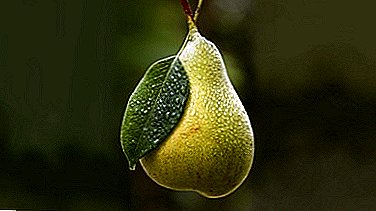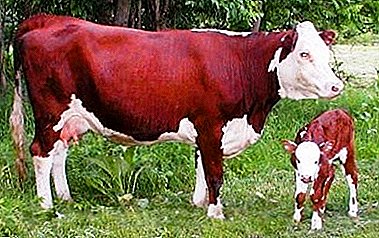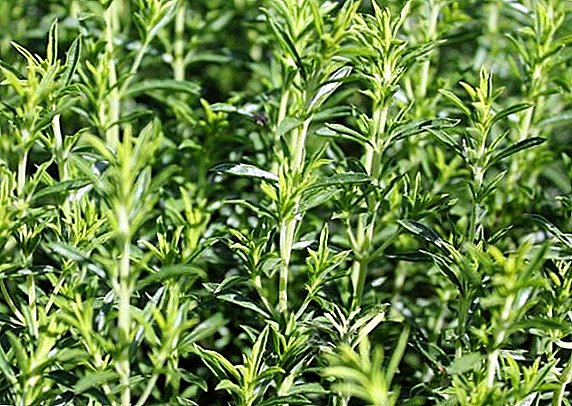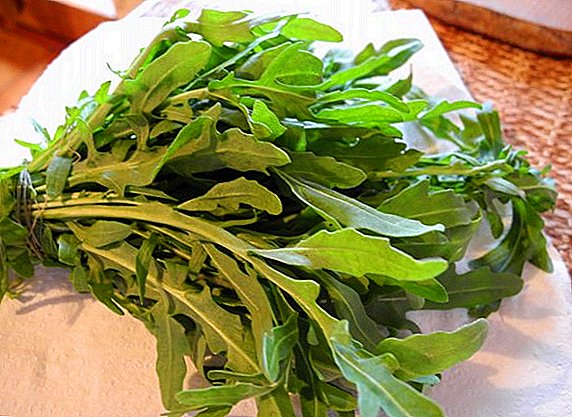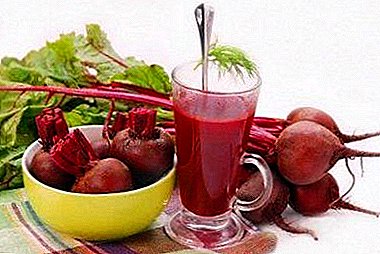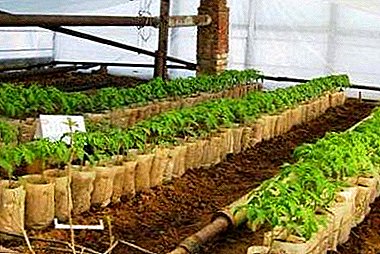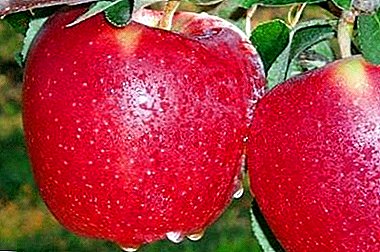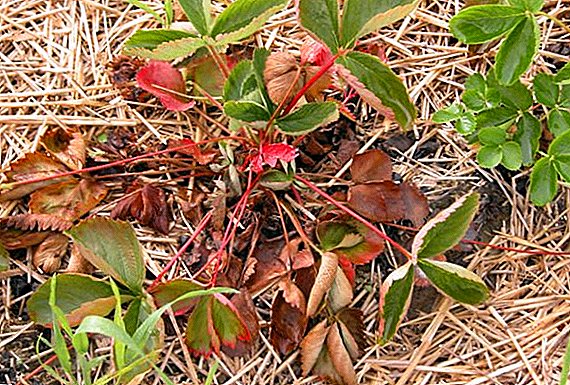 Wilting plants may not only in the dry season. It can be caused by fungi that parasitize the root system and do not allow shrubs, vegetables or trees to grow normally. They are found already with the complete death of the plant. Verticillous wilting is considered especially dangerous for crops. Most often it affects small berry bushes and root crops. No exception and strawberries. Therefore, it is necessary to know the signs of damage and methods of preventing verticillary wilting of strawberries.
Wilting plants may not only in the dry season. It can be caused by fungi that parasitize the root system and do not allow shrubs, vegetables or trees to grow normally. They are found already with the complete death of the plant. Verticillous wilting is considered especially dangerous for crops. Most often it affects small berry bushes and root crops. No exception and strawberries. Therefore, it is necessary to know the signs of damage and methods of preventing verticillary wilting of strawberries.
What kind of disease and where does it come from
Verticillary wilting is fungal diseasethat develops in the soil. Phytopathogenic fungi of the genus Verticillus, namely Verticillium dahliae, cause rapid death of the plant. Due to sclerotia - the resting part of the mycelium, this type of mushroom can develop in the most adverse conditions.  Parasitism encompasses all water-carrying vessels. They form mycelium of the fungus. Initially it was believed that the plant dies due to vascular occlusion by the mycelium. But in the course of research, it was found that the mycelium of verticillary secretes toxic substances that are spread throughout the plant with water. The largest patch that is affected in the host plant is the root. Removing damaged strawberries, you can notice a change in the color of the root system, as well as its loose state and small size.
Parasitism encompasses all water-carrying vessels. They form mycelium of the fungus. Initially it was believed that the plant dies due to vascular occlusion by the mycelium. But in the course of research, it was found that the mycelium of verticillary secretes toxic substances that are spread throughout the plant with water. The largest patch that is affected in the host plant is the root. Removing damaged strawberries, you can notice a change in the color of the root system, as well as its loose state and small size.
Did you know? This type of mushroom can parasitize on other mushrooms (face, russula).
The disease can be transmitted by spores, so it can be transferred to the inventory or another plant. 
Signs of defeat
One of the main signs of verticillary wilt as strawberries and strawberries are dried bottom leaves. When you first discover a shrub in such a state, you think that more frequent watering is needed. But then, by watering the plant, you will notice that there is no improvement, and the bush fades even more. By this time, the berries become brown in color, and the leaves of the entire bush dry out completely.
Also a sign of the disease are the dwarf size of the bush and the red color of the plant petioles. Do not confuse the disease with other types of wilting - fusarium and phytophtoric. In the first case, leaf necrosis is detected, and after a month and a half, the complete death of strawberries. In the second case, the axial cylinder acquires a red color, and in chronic form, the leaves are shaped as a bowl and have a gray tint.  In late blight, the shrub does not bear fruit or brings a small amount of fruit, but the verticillary lesion does not affect the amount of the crop, affecting only its quality (the berries are covered with rot).
In late blight, the shrub does not bear fruit or brings a small amount of fruit, but the verticillary lesion does not affect the amount of the crop, affecting only its quality (the berries are covered with rot).
Important! Infection of plants can occur immediately after planting, but the first signs will be noticeable only after 2-3 years.
Preventive measures
In order that strawberry bushes are not affected by the fungus, it is necessary choose a landing site carefully. You can not plant bushes, where until then grew heavy crops, for example, beets. Loosening strawberries is also not recommended. After all, it is with the help of garden tools that the fungus can be transferred to the soil. Mulching would be a good alternative.
Experienced gardeners recommend spraying with fungicides or biologics before or during flowering of the bush. You can not do this during the ripening of berries, because some drugs have a "waiting period" or "last processing date." This is the time interval between the last treatment and the harvest when the amount of harmful substances of the used drug is reduced to a safe level. The waiting period for each drug is individual. Usually it is described in the regulations on the application.  Transplant strawberries every 3-4 years to avoid verticillous wilting. At the same time, it is worth returning to its former place only after 6 years.
Transplant strawberries every 3-4 years to avoid verticillous wilting. At the same time, it is worth returning to its former place only after 6 years.
It is recommended to choose and resistant varieties of berries, or before planting to handle the root system of strawberries with various solutions.
Tips for novice gardeners: how to grow strawberries from seed, according to Finnish technology, using covering material; how to feed the berry iodine; how to build a vertical bed and a bed-pyramid for ampelous strawberry.
Agrotechnical methods of struggle
It is difficult to determine the onset of fungal infection, so gardeners most often find plants that have already died. Sometimes it happens that verticillary disease is confused with pest damage. For example, spider mite or weevil. Therefore, begin treatment with insecticides. But strawberries do not respond to pest control and fade further. Such a late reaction allows the fungus not only to parasitize one plant, but also transferred to others.  Treatment for verticillary wilting of strawberries includes complete removal of the plant, as well as cultivation of land fungicides. Affected plant and soil cannot be added to the compost. All harvested material is incinerated.
Treatment for verticillary wilting of strawberries includes complete removal of the plant, as well as cultivation of land fungicides. Affected plant and soil cannot be added to the compost. All harvested material is incinerated.
We advise you to read about what care measures and fertilizing strawberries will need in the spring, as well as how to care for the berries after harvesting and in the fall.
Anti wilt drugs
Wilt preparations are applied in the form of preventive measures. They protect the soil from verticillus fungi, and also have a disinfecting effect. They should not be used at harvest. Wilt preparations can be of two types: fungicides and biologics. Which one suits you depends on the type of soil and climatic conditions. Let's look at the most popular ones. 
Fungicides
Fungicides are chemical preparations aimed at fighting fungal diseases. They should be carefully applied to strawberries. Each of them has its own instructions for use, which you definitely need to read.
Bordeaux mixture - its basis is copper sulphate and lime. To prepare 3% of the drug, 300 g of copper sulfate must be diluted with 450 g of quicklime in 10 liters of water.
"Maksim" - fungicide for protection against diseases and disinfection of the soil. Available in ampoules, each with 2 ml of active ingredient. On 2 l of water one ampoule is added. One plant should take no more than 100 ml. Non-toxic to humans, and the waiting time is 24 hours. But watering or spraying is best done a week before flowering.
"Fundazol" - the most controversial drug. Some gardeners consider it dangerous for plants, while others recognize it only in the fight against fungal diseases. Nevertheless, it is effective. For spraying, you must take 10 g of "Fundazole" and dilute to 10 liters of water. The prepared solution is consumed on 10 square meters. His waiting period is more than two weeks, because of this processing is carried out before flowering.
Important! "Fundazol" is of low toxicity to bees, but toxic to humans. With prolonged use can cause dermatitis and mucosal damage. Therefore, during spraying, use a respirator and gloves.
The use of any fungicide is most effective in cloudy weather, because exposure to direct sunlight will increase the toxicity of the drug. 
Learn how to save strawberries from brown spots and nematodes.
Biologics
These drugs are an alternative to toxic fungicides. Their use causes the accumulation of hazardous substances in the soil, and does not harm humans.
"Fitotsid-p" - the drug successfully copes not only with rot, but also with fungi. In order to process 100 seedlings, 10 ml of the drug must be diluted in 10 liters of water. Watering is done in the evening or in cloudy weather.
"Phytodoc" - biofungicide, which is used for both vegetable crops and berries. To process the strawberries need 30 g diluted in 10 liters of water. Before watering, the solution with the biological product is left for 1-2 hours in a dark place. Tillage carried out in cloudy weather.
"Trihofit" ("Trikhodermin") - one of the best drugs, because it contains mushrooms of the genus Trichoderma, which settle in the mycelium of phytopathogenic fungi, using it as a nutrient medium. The drug is universal, because it can be used immediately before planting strawberries (200 ml of the drug diluted in 10 liters of water and left in the solution roots of seedlings for 5-6 hours), as well as simply treating the soil 30 ml per 1 square meter. "Trihofit" used in the course of prophylaxis, sprinkling plants (200 ml per 10 liters of water).
"Fitosporin" - this drug can be produced in different forms: powder, paste, liquid. A systemic drug that acts directly on the spores of the fungus. Depending on the form, there are different application rules. 
If the strawberry has pleased you with a good harvest, freeze the berries, make various preparations and jams.
Is it possible to fight in the active phase of development
In the active phase of development, when the vessels of the bush's conductive system are only infected with mycelium, it is practically impossible. This is due to the fact that the parasitic effect of the fungus may be invisible. The fungus infects strawberries already during the growing season or harvest, so saving a bush is useless. After all, it will need to use highly toxic drugs that can harm other plants and your health.
Did you know? The remains of the mycelia of mushrooms, even after tillage, can last from 5 to 15 years.
Resistant varieties
To reduce the chances of verticillary wilting to zero, you need to plant resistant strawberries. These are:
- "Vima Zanta" - the variety is resistant not only to vertucillosis, but also to powdery mildew. Differs in frost resistance. Fruits in early June.
- "Lambada" - a variety suitable for transportation, tolerates low temperatures well. It differs from other bush, which grows heavily and has large berries (40-50 g). It is also resistant to gray rot.
- "Figaro" - gives a big crop and has a high pedicle. It is not affected by fungal diseases and gray mold.
- "Mize Schindler" - brings sweet berries, but small compared to other varieties. It is also resistant to powdery mildew and mite.
- "Festival chamomile" - mid-season variety with small berries. Not resistant to gray mold, but the plant is rarely affected.
- "Tsarskoye Selo" is a high-yielding variety with large fruits. Well tolerated transportation.
- "Favorite" - winter-hardy strawberries, ripens in the middle of summer. The berries are large bright red.
- "Gourmand" - sweet variety, berries of medium size and dense. Ripens late.






So, verticillary wilting is caused by a fungus that parasitizes the root system of strawberries. In order to avoid the death of the plant, it is necessary to apply various preparations for the soil in the form of preventive measures, as well as to inspect the bushes in a timely manner.
If you find an infected strawberry bush, then completely remove it and a small patch of soil around. This place will need to be poured with drugs, and also not planted anything there for several years.


